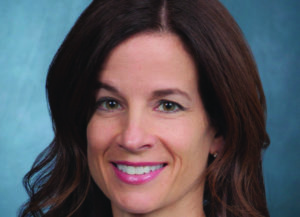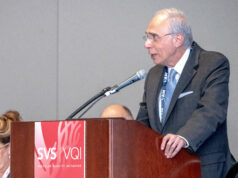
The Society for Vascular Surgery (SVS) Diversity, Equity and Inclusion (DEI) Task Force’s findings and recommendations are taking shape, with some already implemented.
After more than a year of study and information-gathering, the task force presented its findings and recommendations to the SVS Executive Board in late summer.
After enthusiastically embracing the task force’s conclusions, the board has completed an implementation plan to assure that all the recommendations are accomplished. The issues identified by the task force are “significant and compelling … and demand our attention at this moment in time,” the board said. “Your Executive Board commits to the changes necessary to implement its more than 40 recommendations, objectives and requested actions. The in-depth response is the board’s action plan for change. Recommendations and plans are divided into several domains: such as governance and leadership; research; representation and engagement; programs, publications and communications; and recruitment and outreach.”
One of the task force’s top priorities was creation of a new standing committee, the DEI Committee, reporting directly to leadership. That has been accomplished. One of that committee’s first duties and a focus for 2021 will be to create an SVS diversity position statement. It also will work to establish collaborative relationships with SVS councils and committees.
The task force also recommended, and the board implemented, the just-completed Physician Member Census, with the report repeatedly citing the lack of comprehensive membership demographics as a “significant impediment to change.”
Kim Hodgson, MD, the 2019–20 SVS president, established the DEI Task Force in September 2019, charging it with envisioning a more diverse and inclusive SVS and vascular surgery workforce, and to make recommendations to strengthen the Society’s alignment to its core value on diversity, equity and inclusion.
Bernadette Aulivola, MD, and Matthew Smeds, MD, had proposed a group be formed to analyze potential gender bias and harassment in vascular surgery; this was based on the doctors’ then-recent research findings of high prevalence of gender bias and sexual harassment of vascular surgery faculty at academic vascular surgery programs.
That report can be found at vsweb.org/TBD. Interestingly, the task force presented its report shortly after a firestorm occurred over the publication—and later retraction— in the Journal of Vascular Surgery of a peer-reviewed paper on “Prevalence of unprofessional social media content among young vascular surgeons.” The article prompted worldwide comment and much derision, particularly on social media. At the same time, pointed out SVS president Ronald L. Dalman, MD, the situation “represents an opportunity for the Society—and all of its members—to embrace the moment and fully commit to working together to solidify positive change for the future.”
In announcing its implementation plan, the board also looked to the future. “This is our moment to maximize opportunity for all, both within the SVS and in the larger communities we serve, … extending throughout all facets of our organization,” the Executive Board said.
The August 2020 issue of Vascular Specialist was dedicated to exploring diversity, equity and inclusion. Read the edition—including an article on the survey referenced above—at vsweb.org/SpecialistAugust2020. The full task force report, as well as the board’s response, will be published in an upcoming issue of the Journal of Vascular Surgery. They are now available online at vsweb.org/DEIreport and vsweb.org/DEIresponse.












